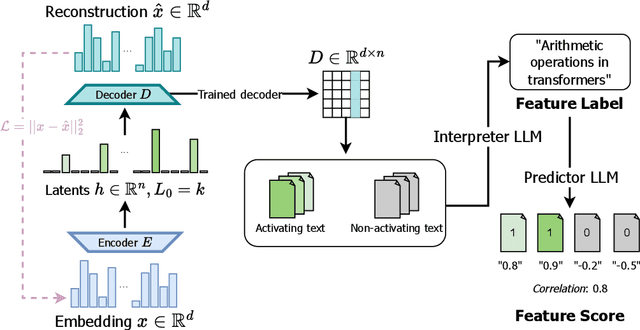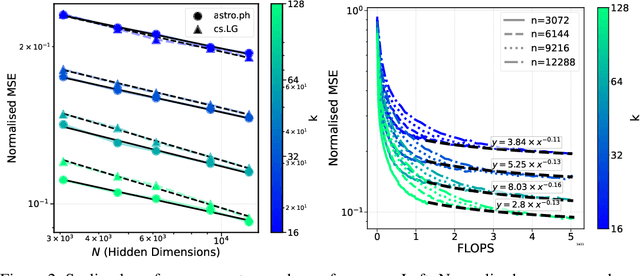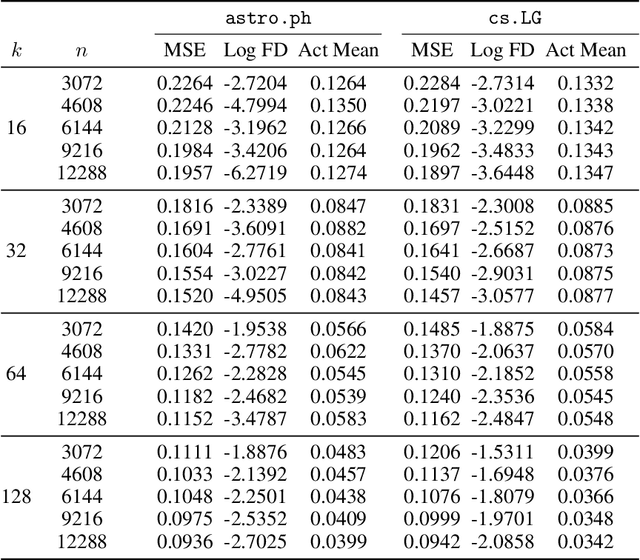Christine Ye
UniverseTBD
Disentangling Dense Embeddings with Sparse Autoencoders
Aug 05, 2024



Abstract:Sparse autoencoders (SAEs) have shown promise in extracting interpretable features from complex neural networks. We present one of the first applications of SAEs to dense text embeddings from large language models, demonstrating their effectiveness in disentangling semantic concepts. By training SAEs on embeddings of over 420,000 scientific paper abstracts from computer science and astronomy, we show that the resulting sparse representations maintain semantic fidelity while offering interpretability. We analyse these learned features, exploring their behaviour across different model capacities and introducing a novel method for identifying ``feature families'' that represent related concepts at varying levels of abstraction. To demonstrate the practical utility of our approach, we show how these interpretable features can be used to precisely steer semantic search, allowing for fine-grained control over query semantics. This work bridges the gap between the semantic richness of dense embeddings and the interpretability of sparse representations. We open source our embeddings, trained sparse autoencoders, and interpreted features, as well as a web app for exploring them.
pathfinder: A Semantic Framework for Literature Review and Knowledge Discovery in Astronomy
Aug 02, 2024



Abstract:The exponential growth of astronomical literature poses significant challenges for researchers navigating and synthesizing general insights or even domain-specific knowledge. We present Pathfinder, a machine learning framework designed to enable literature review and knowledge discovery in astronomy, focusing on semantic searching with natural language instead of syntactic searches with keywords. Utilizing state-of-the-art large language models (LLMs) and a corpus of 350,000 peer-reviewed papers from the Astrophysics Data System (ADS), Pathfinder offers an innovative approach to scientific inquiry and literature exploration. Our framework couples advanced retrieval techniques with LLM-based synthesis to search astronomical literature by semantic context as a complement to currently existing methods that use keywords or citation graphs. It addresses complexities of jargon, named entities, and temporal aspects through time-based and citation-based weighting schemes. We demonstrate the tool's versatility through case studies, showcasing its application in various research scenarios. The system's performance is evaluated using custom benchmarks, including single-paper and multi-paper tasks. Beyond literature review, Pathfinder offers unique capabilities for reformatting answers in ways that are accessible to various audiences (e.g. in a different language or as simplified text), visualizing research landscapes, and tracking the impact of observatories and methodologies. This tool represents a significant advancement in applying AI to astronomical research, aiding researchers at all career stages in navigating modern astronomy literature.
Designing an Evaluation Framework for Large Language Models in Astronomy Research
May 30, 2024


Abstract:Large Language Models (LLMs) are shifting how scientific research is done. It is imperative to understand how researchers interact with these models and how scientific sub-communities like astronomy might benefit from them. However, there is currently no standard for evaluating the use of LLMs in astronomy. Therefore, we present the experimental design for an evaluation study on how astronomy researchers interact with LLMs. We deploy a Slack chatbot that can answer queries from users via Retrieval-Augmented Generation (RAG); these responses are grounded in astronomy papers from arXiv. We record and anonymize user questions and chatbot answers, user upvotes and downvotes to LLM responses, user feedback to the LLM, and retrieved documents and similarity scores with the query. Our data collection method will enable future dynamic evaluations of LLM tools for astronomy.
 Add to Chrome
Add to Chrome Add to Firefox
Add to Firefox Add to Edge
Add to Edge